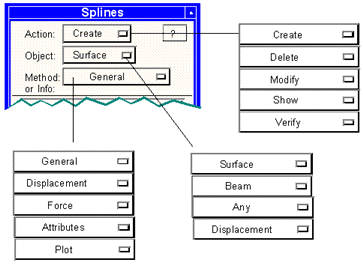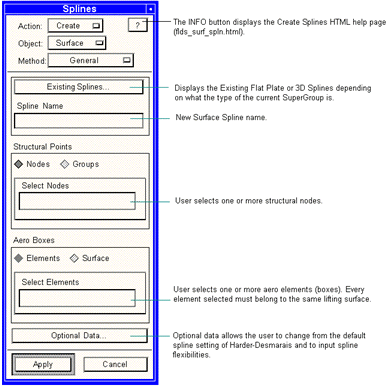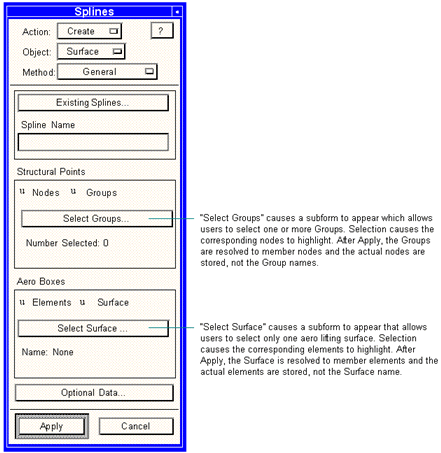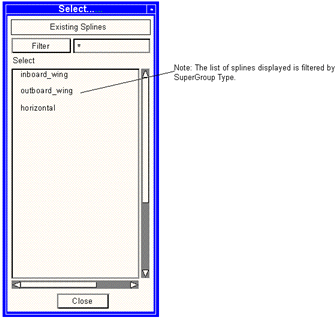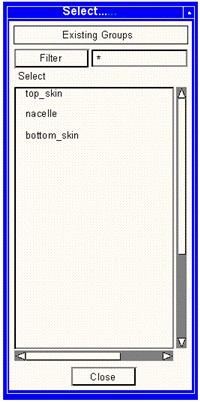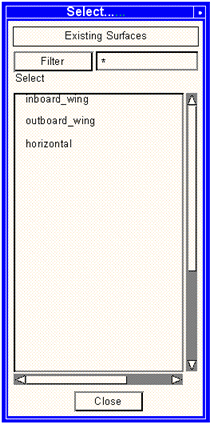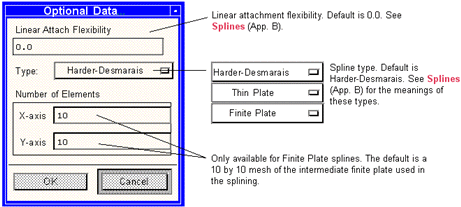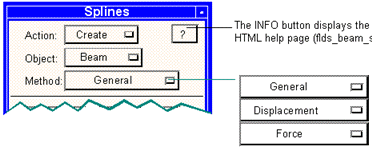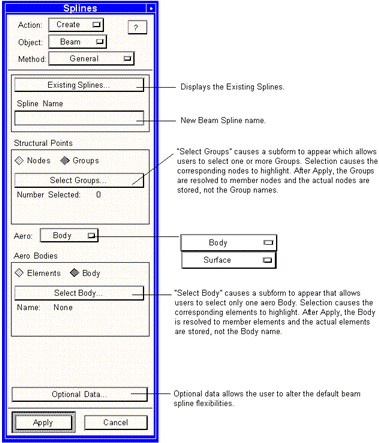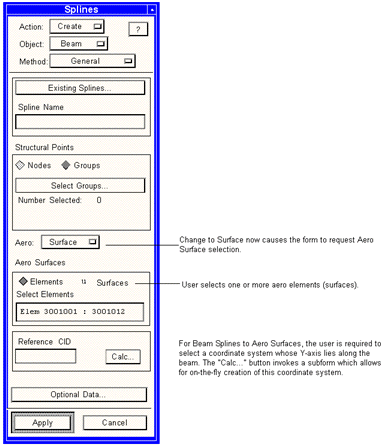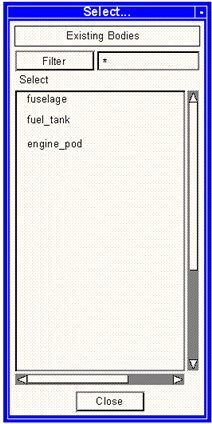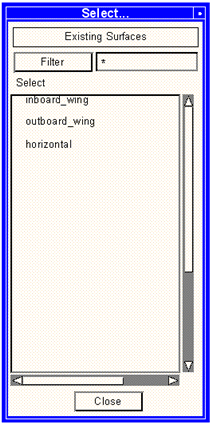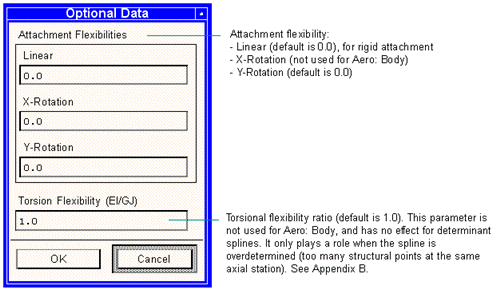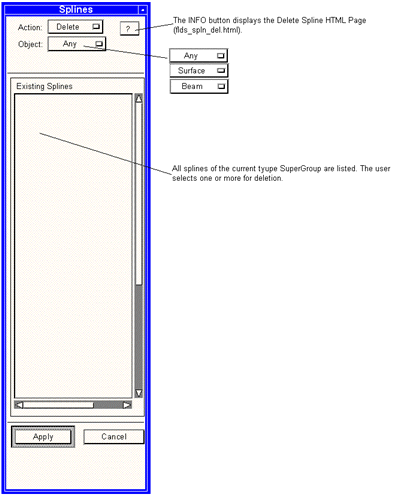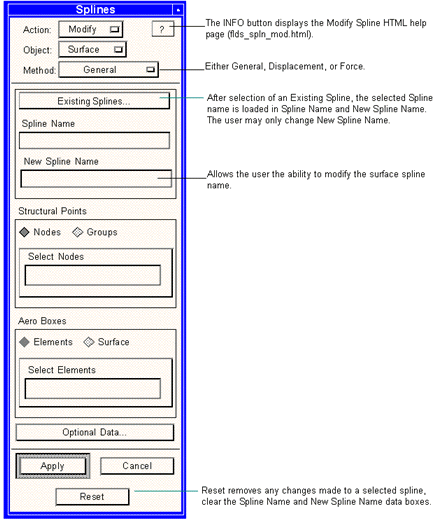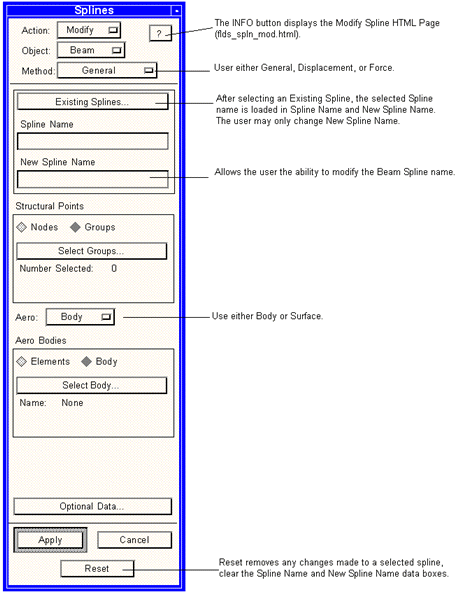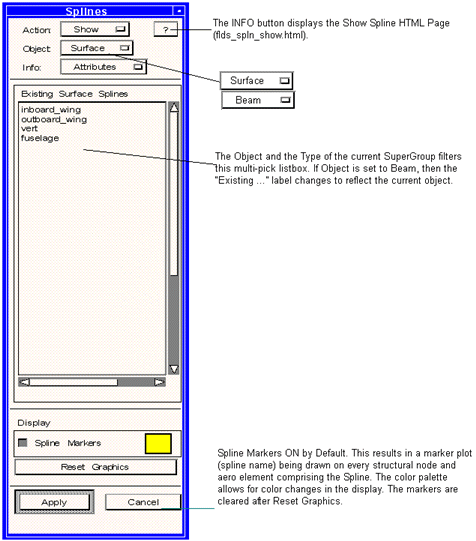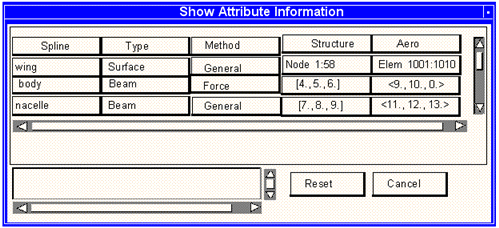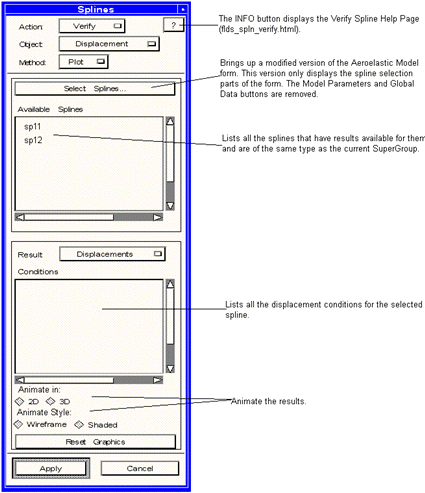XXXXXXXXXXXXXXXXXXXXXXXXXXXXXXXXXXXXXXXXXXXXXXXXXXXXXXXXXXXXXXXXXXXXXXXXXXXXXXXXXXXXXXXXXXXXXXXXXXXXXXXXXXXXXXXXXXXXXXXXXXXXXXXXXXXXXXXXXXXXXXXXXXXXXXXX''"> Aero-Structure Coupling
The aerodynamic and structural models are created and exist as completely separate entities. In the MSC.Patran database, any number of structural models and aerodynamics models (SuperGroups) may exist. To perform an analysis, a pair of these models must be “connected” to each other.
In aeroelasticity, what is required is that you relate the model in such a way that the aerodynamic forces can be mapped to the structural model (with equilibrium preservation) and that the structural deformation be mapped to the aerodynamic model to allow aeroelastic forces to be computed.
It is the aero-structure coupling that brings these two models together using splining concepts.
Splines (App. B) of this User’s Guide provides theoretical information on the variety of splines available in MSC.FlightLoads. Accurate splining is a key task in an aeroelastic analysis and
Splines (App. B) provides guidelines on the creation and validation of the splines. This module provides extensive tools for both aspects of coupling.
Overview
When Aero-Structural Coupling is selected, the first form displayed is Create/Surface/General. Shown adjacent to this form are all the different possible Actions, Objects, Methods, and Infos for Splines.
Not all combinations of Action-Object have a Method menu. In some instances it is substituted with an Info menu and in others there is nothing.
There are two basic methods for splines: beam splines and surface splines. In general, beam splines work well for high aspect ratio wings, bodies and for beam structural models. Surface splines work well for low aspect ratio wings and all built-up structures. Note that, in general, it is the nature of the structural model that determines the best spline choice.
Note: | Beam Splines are not available if the current SuperGroup is of type 3D. |
Most of the Aero-Structural Coupling forms are shown and annotated in the following pages, grouped by Action as follows:
• Create
• Delete
• Modify
• Show
• Verify
Definitions for Spline Methods
The possible Methods are: "Displacement" which is used to transfer structural displacements to the aero model, "Force" which is used to transfer aerodynamic forces to the structural model and "General" where in the same structure and aero points are used to construct both the displacement and force transfer mechanism. In this latter case, which is the most commonly used method in MSC.Nastran, the matrix used to spline forces is simply the transpose of the matrix used to spline displacements. Users may, however, want to separate the spline usage because of the desire to map aerodynamic forces only to structural load pick up points (i.e., aircraft wing spar/rib intersections) while a larger set of structural points would more accurately define a displacement shape to be mapped to the aerodynamic model. Using this separate approach may actually increase solution efficiency due to the (potentially) reduced spline matrix densities.
Aero-Structure Coupling
Following is a list of the Aeroelastic forms and subforms related to Aero-Structure Coupling (Splines):
• Create/Surface (General, Displacement, or Force)
• Create/Surface Subforms
• Existing Splines
• Select Groups
• Select Surface
• Optional Data
• Create/Beam (General, Displacement, or Force) Aero Body
• Create/Beam (General, Displacement, or Force) Aero Surface
• Create/Beam Subforms
• Select Body
• Select Surface
• Optional Data
• Delete (Any, Surface, or Beam)
• Modify/Surface (General, Displacement, or Force)
• Modify/Beam (General, Displacement, or Force)
• Show/Surface or Beam/Attributes
• Show Attribute Information
• Verify/Displacement/Plot
Create/Surface (General, Displacement, or Force)
Surface splines are typically used to couple aerodynamic lifting surfaces to structural plate models representing upper and/or lower lifting surfaces. The Create/Surface form is used to create an intermediate surface that serves to develop the spline matrices. FlightLoads supports three variations of surface splines. The first is the Harder-Desmarais spline where the intermediate surface is a flat plate that is infinite in extent. The second is the Thin Plate spline where the intermediate "surface" is the swarm of structural points (which must not be coplanar). The third type is a Finite Plate spline wherein the intermediate surface is finite in extent.
Note: | Only thin plate surface splines are allowed when the current SuperGroup is of Type 3D. |
The Create/Surface form defines a name for the spline and identifies the structural points and aerodynamic boxes that are connected to the spline. Subforms allow the user to display the names of the previously Existing Splines and to set Optional Data. The structural node selection can be done by selecting or typing in the node ID’s or by selecting one or more structural groups. In a similar manner, the Aero Boxes can be selected by typing in or picking the element ID’s or the Surface option can be used to include all of the elements from only one Lifting Surface.
Create/Surface Subforms
Existing Splines
This subform allows users to see the names of previously created splines. Selection of a spline does not result in any information being transferred back to the Create form.
Select Groups
This subform allows users to conveniently select a set of structural nodes to use in the spline simply by their membership in one or more Groups. After spline creation, the structural nodes are stored, not the Group names.
Select Surface
This subform allows users to conveniently select a set of aerodynamic elements to use in the spline simply by their membership in a Lifting Surface or a 3D Aero surface. After spline creation, the aerodynamic elements are stored, not the Lifting Surface name.
Optional Data
This subform allows users to change the default spline type from Harder‑Desmarais to either Thin Plate or Finite Plate. Depending on the spline type selected, the allowable user input varies (see below).
Note: | If the current SuperGroup is of type 3D then the only type available is thin plate. |
Create/Beam (General, Displacement, or Force) Aero Body
Beam splines are typically used to couple either aerodynamic lifting surfaces or bodies to structural beam models whose stiffness represent the bending and torsion characteristics of an actual vehicle component (i.e., wing, fuselage, etc.). The Create/Beam form is used to generate a spline that is conceptually based on an intermediate structure which is a one-dimensional beam of infinite extent. The form itself is similar to the Create/Surface form with the modification that the associated Aero elements can come from either a lifting surface or a body. If a lifting surface is being splined, it is necessary to define a coordinate system whose Y-axis extends along the beam. (Aerodynamic bodies do not require a coordinate system; the body’s X-axis defines the spline axis.)
Note: | This object is not available when the current SuperGroup is of type 3D. |
This form is used to spline structural beams to aerodynamic bodies. The Create/Beam form defines a name for the spline and identifies the structural points and aerodynamic bodies that are connected to the spline. Subforms allow the user to display the names of the previously Existing Splines and to set Optional Data. The structural node selection can be done by selecting or typing in the node ID’s or by selecting one or more structural groups. In a similar manner, the Aero Bodies can be selected by typing in or picking the element ID’s or the Body option can be used to include all of the elements from only one Body.
Create/Beam (General, Displacement, or Force) Aero Surface
This form is used to spline structural beams to aerodynamic lifting surfaces.
Create/Beam Subforms
Select Body
This subform allows users to conveniently select a set of aerodynamic elements to be used in the spline simply by their membership in a Body. After spline creation, the aerodynamic elements are stored, not the Body name.
Note: | The user selects one Surface. |
Select Surface
This subform allows users to conveniently select a set of aerodynamic elements to be used in the spline simply by their membership in a Lifting Surface. After spline creation, the aerodynamic elements are stored, not the Lifting Surface name.
Note: | The user selects one Surface. |
Optional Data
This subform allows users to change the default beam spline attachment flexibility. A negative value for the rotation attachments means the spline is not attached to these rotations; that is, the structural rotations are not transferred to the aero model (types DISPLACEMENT, BOTH) and/or the aerodynamic forces are not put a moment on the associated structural points (types FORCE, BOTH).
Delete Any, Surface or Beam
Delete allows users to remove previously created Surface and Beam Splines from the database. For Object = Any, users may select Surface and/or Beam Splines for subsequent deletion.
The Delete/Any version of the form is shown below.
Note: | If the current SuperGroup is of type 3D, then only the Any and Surface Object will be available on this form. |
Note: | If Object is set to a specific object (i.e., Surface or Beam), then the “Existing ...” label reflects the current object. The listbox is also filtered. |
Modify/Surface (General, Displacement, or Force)
This form is identical to Create/Surface Spline form, with the added ability to modify the spline name. It allows users to alter previously created surface splines.
Note: | Only Thin Plate Surface splines can be modified when the current SuperGroup is of type 3D. |
Modify/Beam (General, Displacement, or Force)
This form is identical to Create/Beam Spline form for both Aero Body and Aero Surface (Aero Body is shown below), with the added ability to modify the spline name.
Note: | This Object is not available when the current SuperGroup is of type 3D. |
Show Surface or Beam/Attributes
Show allows users to review information on previously created Surface and Beam Splines. This information is displayed in both tabular and graphical formats. Selecting Apply on this form results in the display of a spreadsheet of information (see next page) and optionally markers on the selected splines. The Show/Surface/Attributes version of the form is shown here. Showing Spline attributes results in the display of a spreadsheet of information (see next page) and, optionally, markers on the selected Splines.
Note: | This Object Beam is not available when the current SuperGroup is of type 3D. |
Show Attribute Information
Selection of any cell in the spreadsheet causes that row’s information to be displayed in more detail in the information box.
Verify/Displacement/Plot
Verify allows the users to verify previously created Surface and Beam Splines using displacements and to, optionally, animate the results.
